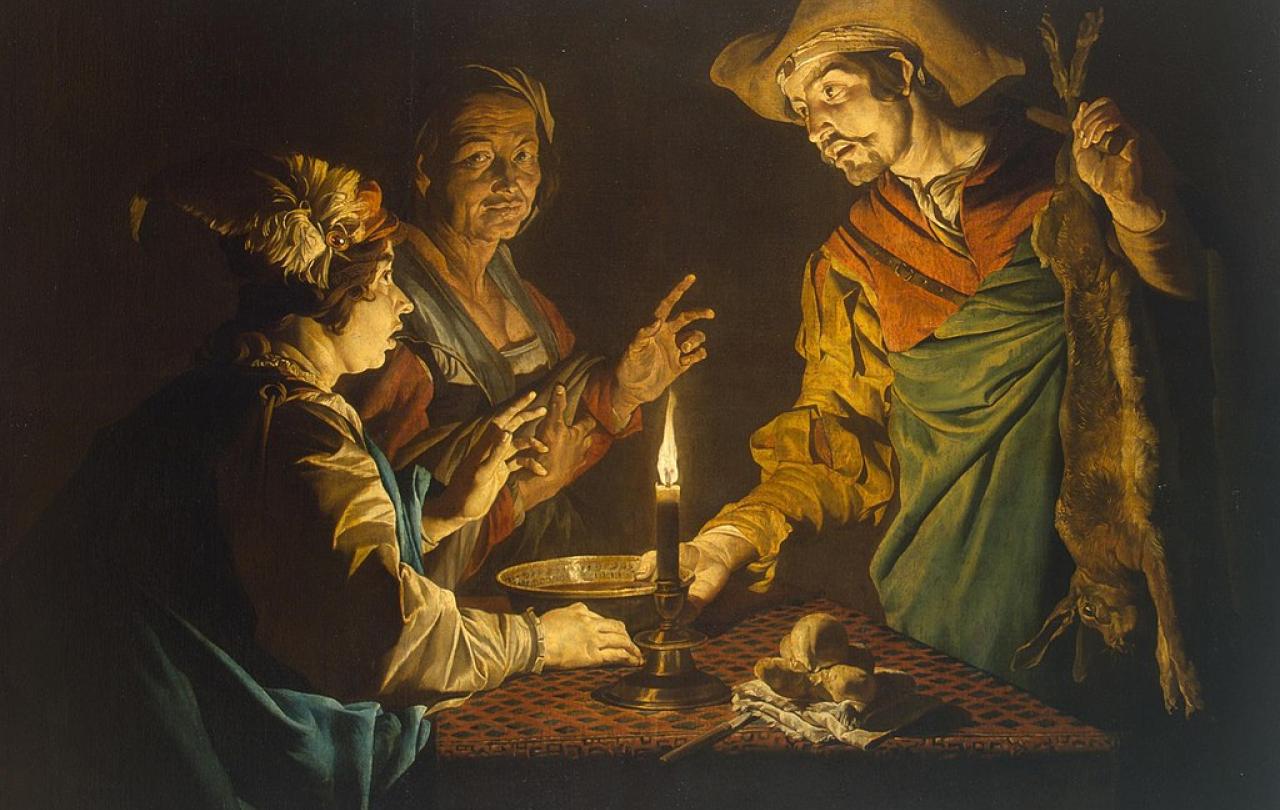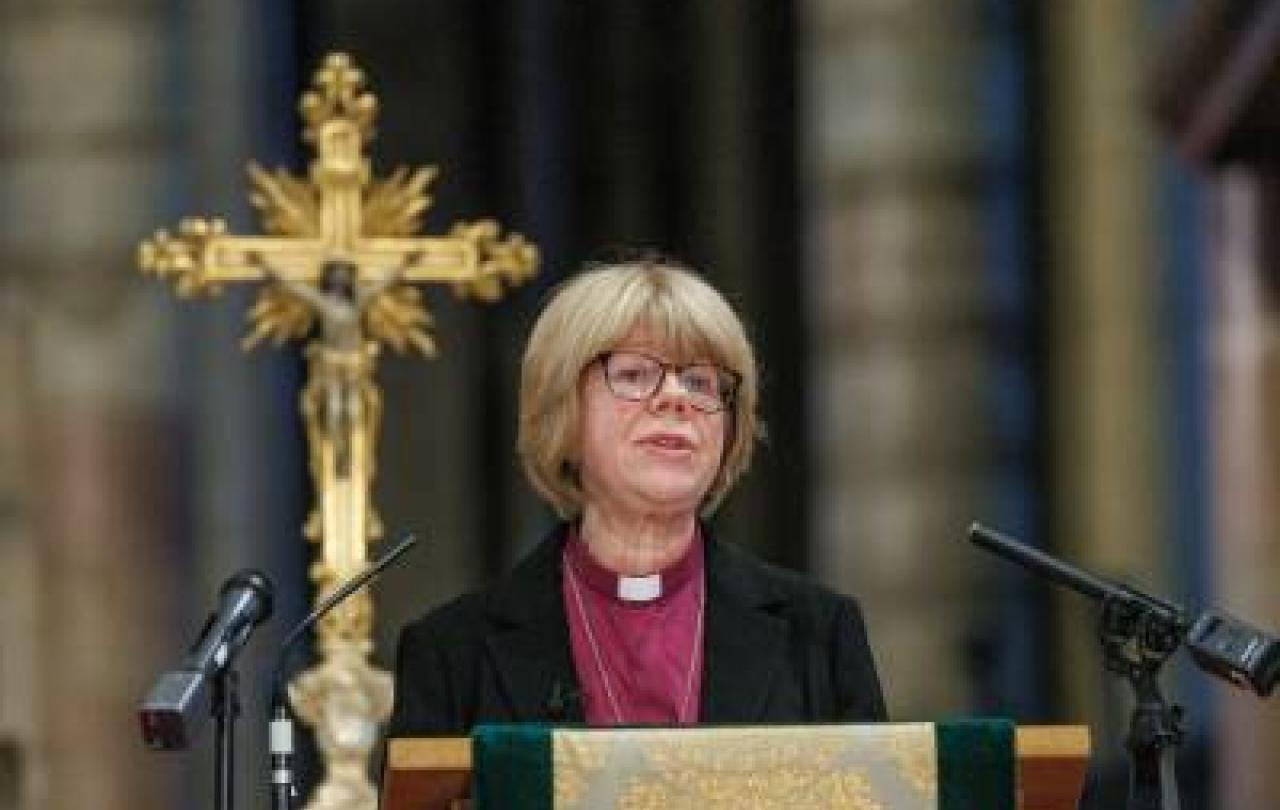
Have you looked at the Old Testament lately? In terms of how much better it can make you feel, I mean – particularly in the face of modern politics? No, me neither. Or at least not until a few days ago. Having not been a Christian for most of my life, I’d fought shy of the Bible rather, and the oldest bit in particular. Too remote, too ferocious, too weird, it seemed to me. Full of unpronounceable names and lists of strange rules. How could those be applicable? And then I made the mistake of going to evensong with my friend Alice, an agnostic animal lover, and we got a reading from the book of Judges about that heroic strongman Samson tying foxes together, setting fire to their tails and letting them loose in the Philistines’ crops. Which sent us both running out of the service and finished off Alice’s church career, terminally I think!
But as always in life, exploring new territory can be made enjoyable or otherwise by who you go exploring with. And a couple of weeks ago in a second-hand bookshop, I found a thin volume entitled Unread Best-seller: Reflections on the Old Testament by someone called Mary Stocks, which looked interesting. So I bought it and started reading it that day. I finished it that day. Then I read it again the next day, and I might read it again this week actually.
Mary Stocks, it turns out, was extremely posh (she became a baroness eventually, and a life peer in the House of Lords); extremely scholarly (she did a whole series of talks for the BBC in the 1950s, when not many women did such things), and extremely funny. She also adored the Old Testament. Not only is it full of glorious language she said, but it also offered great emotional resonance and satisfaction – particularly since she was writing during the Second World War, and finding many parallels between her own time and the fierce and far-off past. ‘Deborah was, I think, the Winston Churchill of her people’, she said of one outspoken prophetess, who inspired dispirited Israel (‘a remnant against the mighty’) to new efforts – and ultimate victory – over the King of Canaan. The battle of Megiddo that they won was the very same Megiddo fought over by General Allenby in the First World War, alongside some of Lady Mary’s own family. Echoes upon echoes. Elsewhere she described seeing a young serviceman, clearly not a regular church goer, listening to the Song of Deborah during ‘one of the blackest weeks of the war’ and saying ‘quite loudly, because he couldn’t help it, “Splendid”.’ ‘People are not often provoked to behave like that in Church’, she continued. ‘But there are lines in the Bible which, coming suddenly right at one, might prompt that sort of outburst.’
With all that as precedence, it doesn’t half shed a different light on the awful new sorts we’re coping with at the moment.
From my point of view though, the most thought-provoking insight I gained from Lady Mary was centred around how dreadful a lot of the Old Testament heroes were. Jacob, for example. Jacob – the founding father of the tribes of Israel! He swindled his brother Esau out of his birthright, by pretending to be him in front of their poor old father Isaac, who was blind. ‘Esau was an hairy man’, we are told. So smooth Jacob magically became an hairy man too, by strapping sheepskin to his arms, which Isaac fell for and pronounced his blessing upon him, the cheating git. And Samson, cruel to foxes as we saw above, was also vain, selfish and violent to boot. Not to mention David. Shiny King David, glorious poet, heroic defeater of the giant Goliath and ancestor of Christ himself, was first a voyeur (spying on beautiful Bathsheba while she was washing) then a date rapist (seducing same Bathsheba) then a murderer (seeing off Bathsheba’s husband Uriah by ordering his comrades to abandon him in battle). Even Noah, who I’d assumed to be a good sort (seeing as he’d rescued all of creation from the Great Flood in his ark) was given to drunkenness, and behaved very badly to his grandson who’d seen him flopped on his bed without his clothes.
In fact from the time that Adam and Eve disastrously ate the forbidden apple onwards, the whole book contains a litany of cowardice, lying, stealing, cheating, bullying, fighting, stupidity, killing and I don’t know what else. But this is where it’s got weird for me. Suddenly, I can see Lady Mary’s ‘emotional resonance’ – because our world today also contains exactly that: a litany of cowardice, lying, stealing, cheating, bullying, fighting, stupidity, killing and I don’t know what else.
But the point is that God doesn’t seem to mind this terribly: he engaged directly with all those awful old sorts – and despite their flaws, they became the heroes of the Old Testament and the agents of his will upon the earth. Moses might have murdered an Egyptian overseer and run away and hidden because of it, but he also was chosen by the Lord to lead the Israelites to the promised land. God’s actual game plan didn’t get corrupted, just because the pieces on the board were bent and chipped.
So with all that as precedence, it doesn’t half shed a different light on the awful new sorts we’re coping with at the moment. A menacingly orange person with a foul mouth and an unpleasant attitude towards women need not be a source of dismay – even as the new president of America. A friend once described Mr Trump as ‘God’s wrecking ball’, which made me roll my eyes. But perhaps that’s exactly what he is. If David could be ‘a man after God’s own heart’ as the book of Samuel calls him, sexual misdemeanours notwithstanding, there is no reason why Donald couldn’t be a force for good, when wielded by the Lord. Bad manners and a felony conviction are small beer compared to other things God has tolerated in his servants.
‘Let not your hearts be troubled, neither let them be afraid,’ says Jesus in the New Testament, about a thousand years after David’s death. Having been keeping company with Mary Stocks and seeing the big picture of what the Old Testament has to tell us, I might now manage not to be so troubled – at least not by Mr Trump. And the Bible has some tremendous stories about what happens to the seriously wicked. King Saul killed himself when he realised the battle was lost. Well, you know, so did Hitler. And the appalling dictators of Romania in the 1980s – Nicolae and Elena Ceaușescu – came to an end not unlike wicked Queen Jezebel’s, who was thrown from the windows of her palace and trampled by Jehu’s army. Bad King Nebuchadnezzar ‘was driven from the sons of men; and his heart was made like the beasts, and his dwelling was with the wild asses’, says the book of Daniel. Which makes me remember Saddam Hussein being dragged out of a muddy sort of burrow at the end of the Iraq War in 2003, looking completely dishevelled. And come to think of it, didn’t Osama bin Laden – architect of the Twin Towers attack – also spend a lot of time hiding in caves in the wilderness of Swat before he was eventually caught?
Mr Putin, Kim Jong Un and the other bad hats of the world might like to watch themselves: it is odds on that the Lord ‘shall also blow upon them, and they shall wither, and the whirlwind shall take them away as stubble’. It says so in the Old Testament.
‘Splendid!’ as Lady Mary would say.
Join with us - Behind the Seen
Seen & Unseen is free for everyone and is made possible through the generosity of our amazing community of supporters.
If you’re enjoying Seen & Unseen, would you consider making a gift towards our work?
Alongside other benefits (book discounts etc.), you’ll receive an extra fortnightly email from me sharing what I’m reading and my reflections on the ideas that are shaping our times.
Graham Tomlin
Editor-in-Chief





